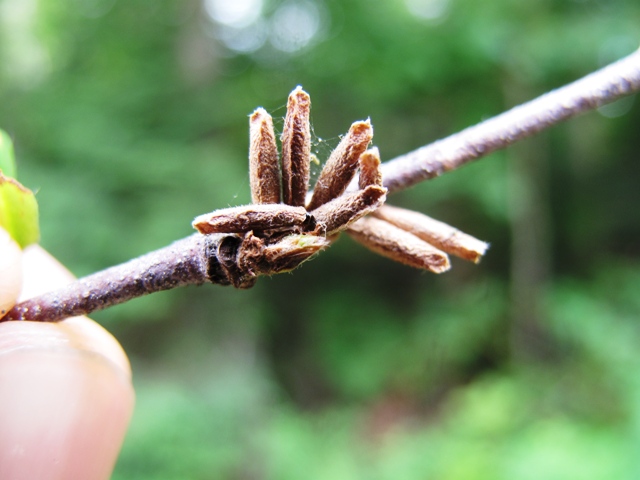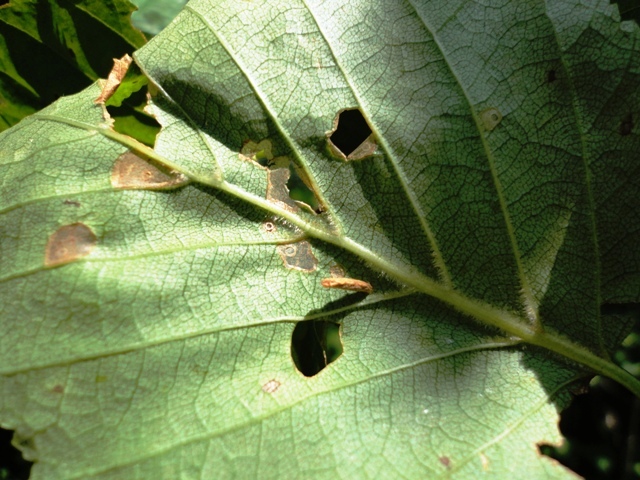Birch casebearer
Information about birch casebearer (Coleophora serratella), a forest defoliating insect found in Ontario.
Overview
- Invasive – native to Europe.
- Birch casebearer is an introduced species to Ontario and is commonly found feeding with the native, lesser birch casebearer (C. comptoniella).
- Larvae or caterpillars of this small moth construct portable cigar-shaped cases from host foliage in which they live and feed.
“Invasive” refers to a species that has moved outside of its native habitat and threatens the new environment, economy or society by disrupting local ecosystems.
Host species
Birch casebearer prefers white birch (Betula papyrifera), but also feeds on other birch and alder species.
Characteristics and life cycle
- Tiny moths, brown-to-tan in colour, appear in early July and lay eggs on the underside of host leaves, which hatch in early to mid-August.
- Newly hatched caterpillars create minute mines in the leaves, feeding for 2 to 3 weeks before making their first case; they feed from the cases well into September before moving to over-wintering sites on the twigs and stem of the host tree.
- In spring, as buds swell and break, caterpillars migrate from within their cases to newly-opening buds to feed.
- Caterpillars feed by attaching the case to the leaf surface, mining the inner tissues as far as they can reach without leaving the case, and then move to another location and repeat the process.
- As the caterpillar feeds, it grows in size and forms a new, larger case to accommodate its development.
- by June, feeding is completed and the caterpillar pupates within its case, which can be found in any place on the tree, on other plants or on understory growth.

Symptoms and damage
- Depending on the severity of the infestation, larvae feeding results in partial to total defoliation with exception to the leaf midrib and veins which are not consumed by larvae.
- Severe feeding on opening buds will kill developing foliage and shoot growth, resulting in partial to complete defoliation of the tree.
- After early season defoliation, trees will appear sparse with only clusters of leaves remaining sporadically distributed over the tree.
- Birch trees have the ability to re-foliate, and buds that were formed for the next growing season are forced out to produce new foliage, which places a great stress on the affected tree.

Control measures
A variety of native insects have become accustomed to infesting the exotic birch casebearer as a parasite. A list of 38 species that emerge from the casebearer pupae have been identified in Quebec.
Updated: May 17, 2021
Published: July 18, 2014